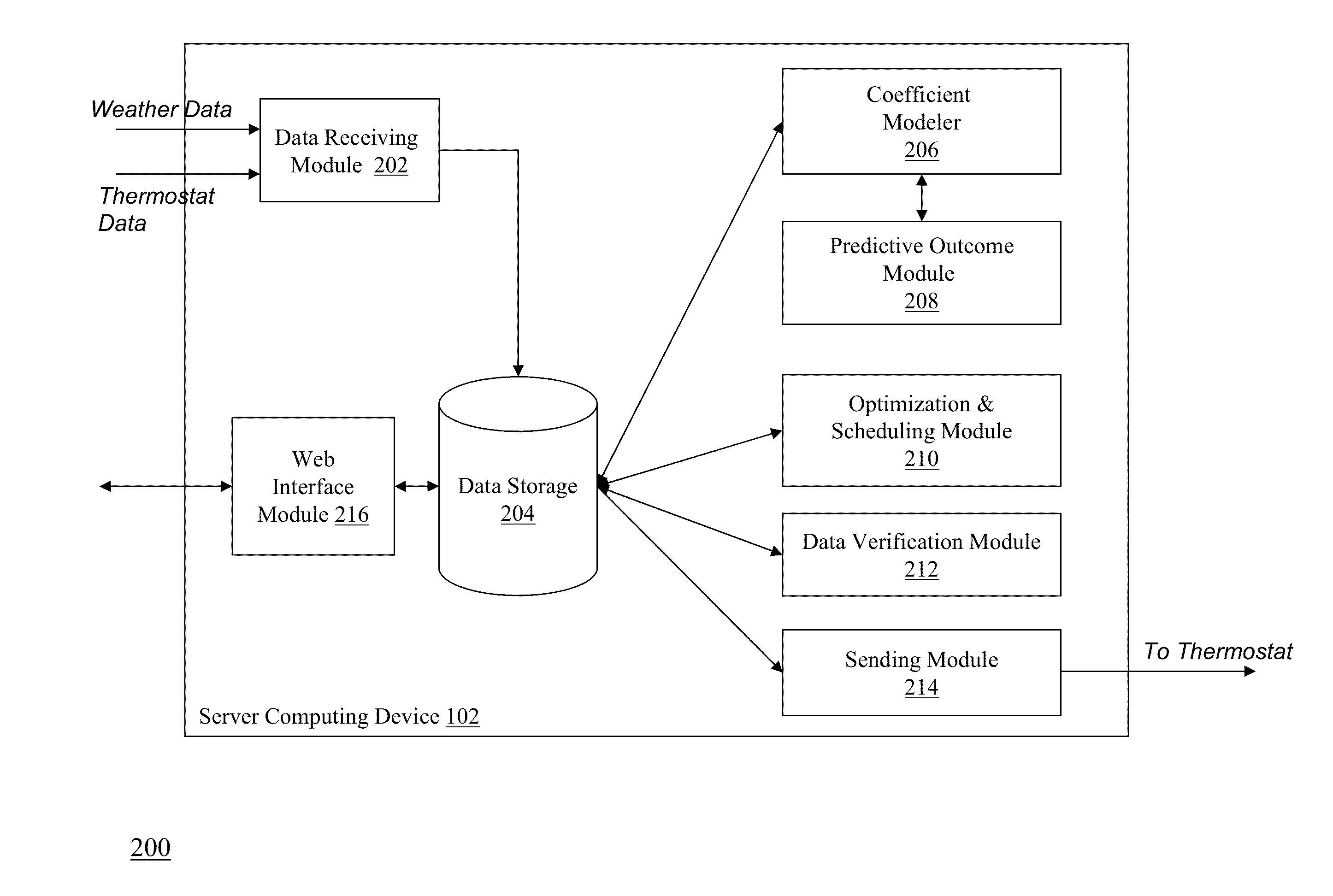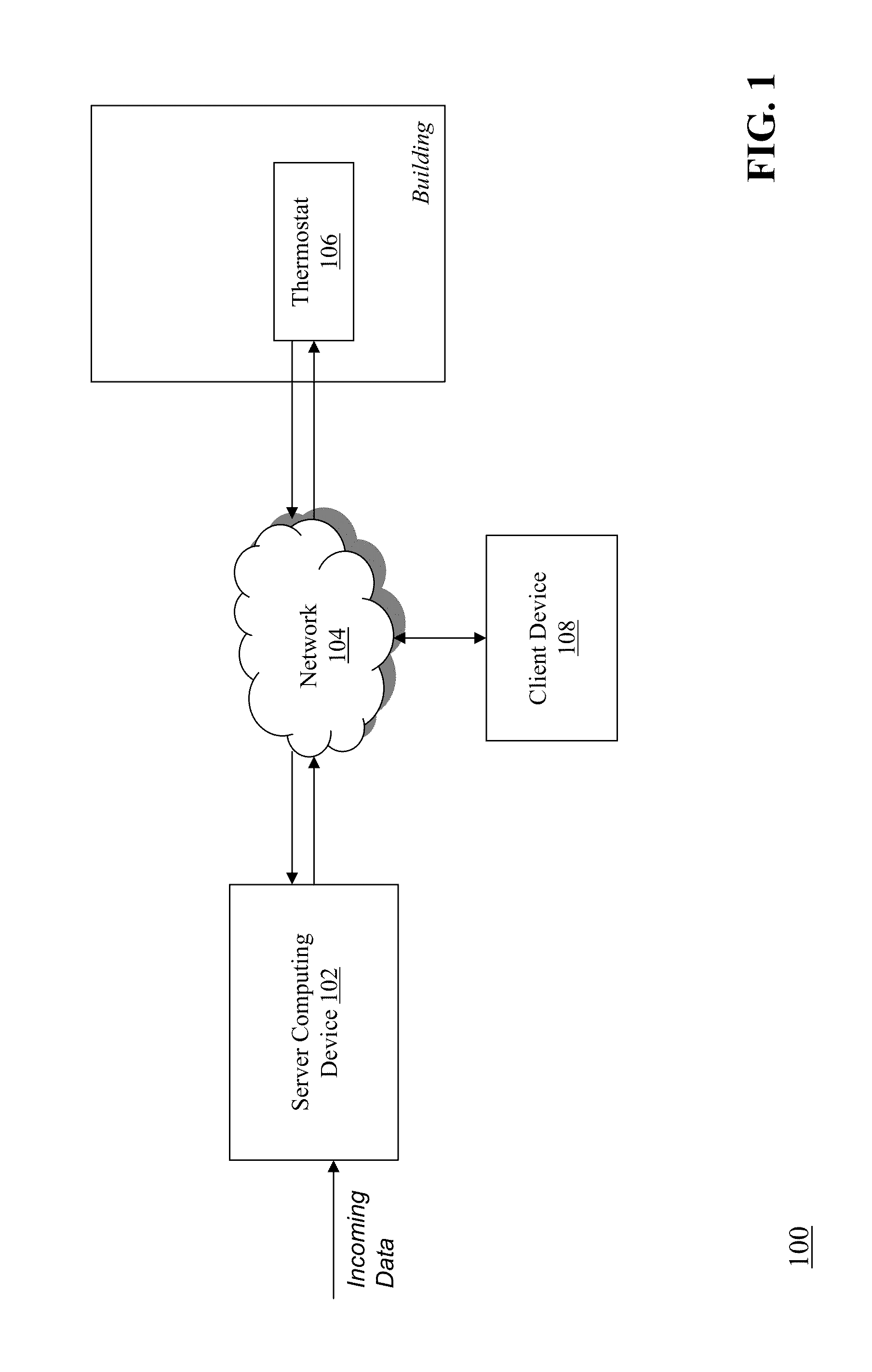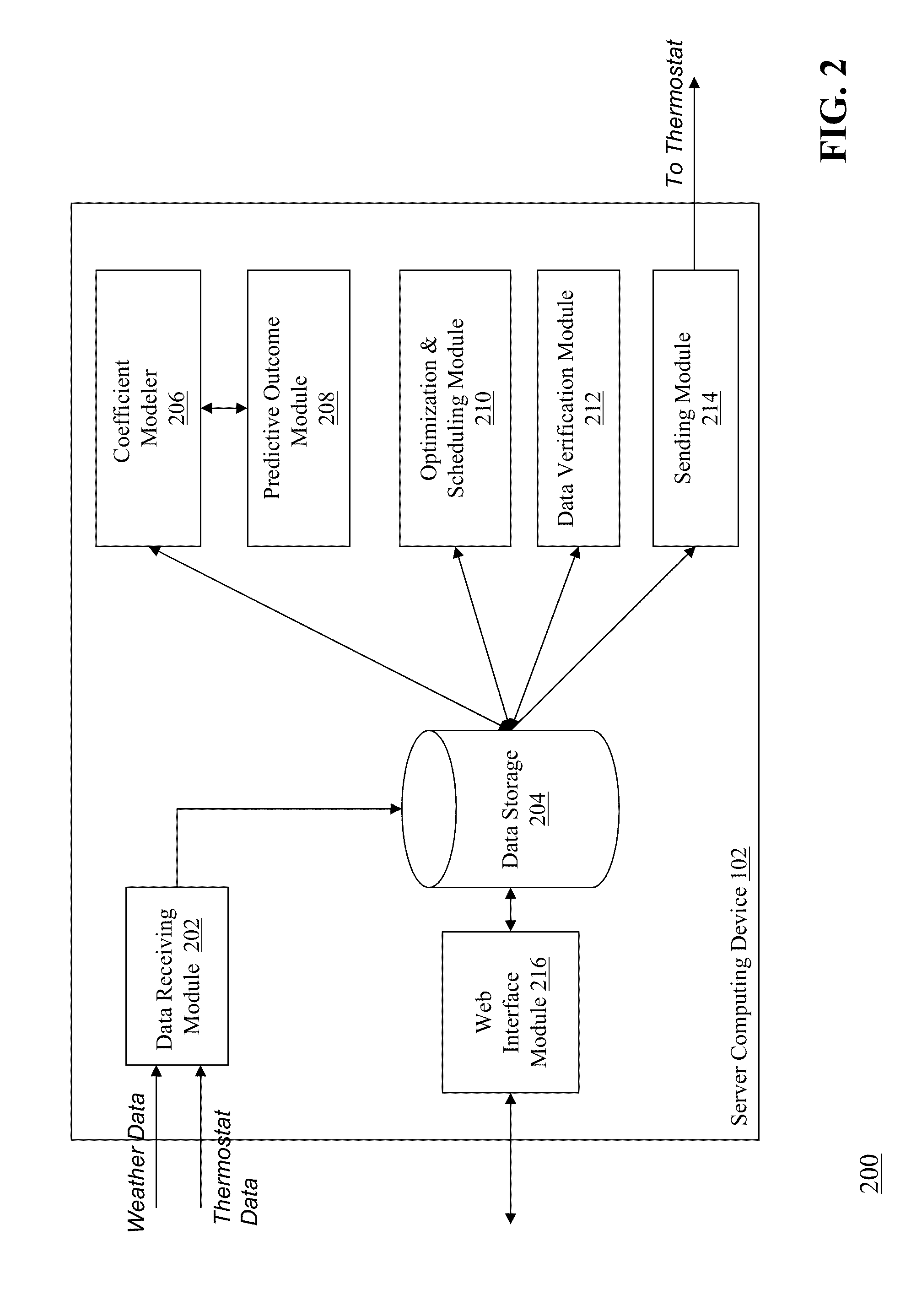Optimizing and controlling the energy consumption of a building
a technology for optimizing and controlling the energy consumption of buildings, applied in adaptive control, program control, instruments, etc., can solve the problem that the system is generally not capable of accounting for the thermal characteristics, and achieve the desired comfort level, improve the efficiency of energy consumption and monitoring, and optimize the energy use of buildings.
- Summary
- Abstract
- Description
- Claims
- Application Information
AI Technical Summary
Benefits of technology
Problems solved by technology
Method used
Image
Examples
Embodiment Construction
[0028]FIG. 1 is a block diagram of a system 100 for optimizing and controlling the energy consumption of a building. The system 100 includes a server computing device 102, a communications network 104, a thermostat device 106 that controls the heating and / or cooling apparatus for a building, and a client computing device 108. The server computing device 102 receives data from external sources (e.g., weather data, thermostat data) and determines energy response characteristics and energy requirements for a particular building. The server computing device 102 determines a temperature set point for the building, and transmits the set point to the thermostat 106 via the network 104 so that the thermostat can adjust the heating / cooling conditions of the building appropriately. The server computing device 102 also interfaces with a client computing device 108 via the network 104 to provide a portal (e.g., a web browser interface) through which a user can view the energy response character...
PUM
 Login to View More
Login to View More Abstract
Description
Claims
Application Information
 Login to View More
Login to View More - R&D
- Intellectual Property
- Life Sciences
- Materials
- Tech Scout
- Unparalleled Data Quality
- Higher Quality Content
- 60% Fewer Hallucinations
Browse by: Latest US Patents, China's latest patents, Technical Efficacy Thesaurus, Application Domain, Technology Topic, Popular Technical Reports.
© 2025 PatSnap. All rights reserved.Legal|Privacy policy|Modern Slavery Act Transparency Statement|Sitemap|About US| Contact US: help@patsnap.com



